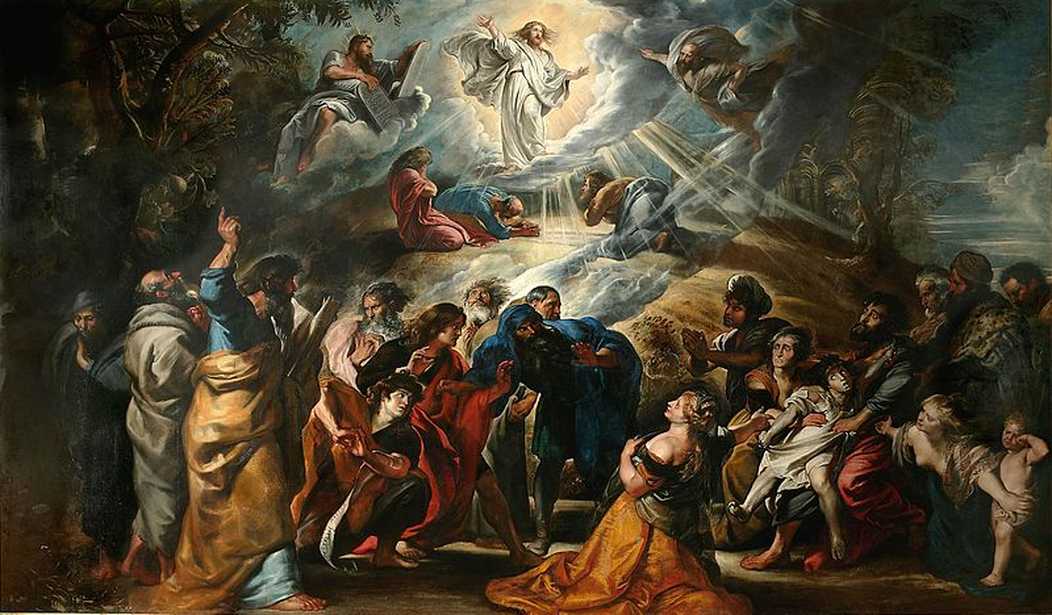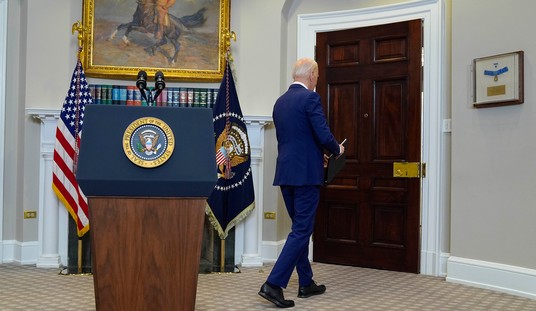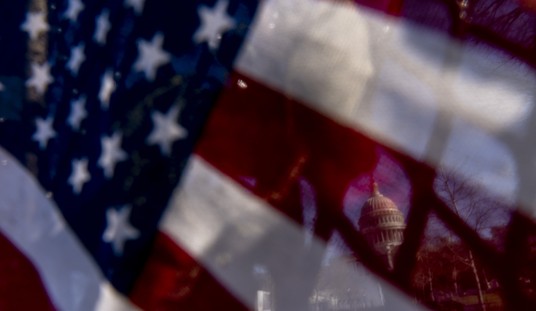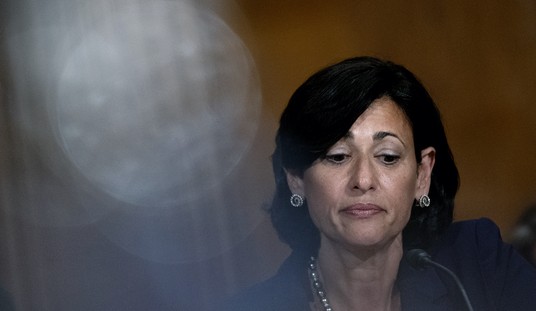This morning’s Gospel reading is Mark 9:2–10:
Jesus took Peter, James, and John and led them up a high mountain apart by themselves. And he was transfigured before them, and his clothes became dazzling white, such as no fuller on earth could bleach them. Then Elijah appeared to them along with Moses, and they were conversing with Jesus. Then Peter said to Jesus in reply, “Rabbi, it is good that we are here! Let us make three tents: one for you, one for Moses, and one for Elijah.” He hardly knew what to say, they were so terrified. Then a cloud came, casting a shadow over them; from the cloud came a voice, “This is my beloved Son. Listen to him.” Suddenly, looking around, they no longer saw anyone but Jesus alone with them.
As they were coming down from the mountain, he charged them not to relate what they had seen to anyone, except when the Son of Man had risen from the dead. So they kept the matter to themselves, questioning what rising from the dead meant.
Earlier this week, I watched part of the film Wall Street: Money Never Sleeps, the long-awaited sequel to Oliver Stone's seminal Wall Street. I found it interesting, less sharply manipulative, and perhaps even a better character study than the original, but this isn't a film review. The reason I mention it is because of one particular scene in which Shia LeBoeuf and Frank Langella walk through a park, and the interesting contrast it provided.
The backdrop of the film is the mortgage-based securities meltdown of 2008, and Langella's character is facing ruin. LeBoeuf's character is his protegé who tries in this passage to get his boss to trust in him to help rescue the situation. Without giving anything too critical away in a film that's 14 years old, Langella's character despairs entirely and jumps in front of a subway train a few scenes later.
At the start of the park scene, though, we see children playing -- running with joy, creating large bubbles (a nice bit of symbolism from Stone in context), and enjoying life. It stands in stark contrast with the despair and death all through this film, right until its rather incongruent ending. The older the adults are, the more they deal in destruction and death mainly through avarice, pride, and envy. They corrupt the younger adults into playing the same games for revenge until almost everyone in the film but the children in the park are trapped in misery, despair, and chaos.
It struck me that Stone had given us a tiny peek at the difference between eternal life with the Lord and life in the fallen world in that one short sequence -- intentionally, I would presume. To live in the life of the Lord is to live like children in wonder and delight, and to serve no other passion but to share in His joy and love. We are truly alive only in that pursuit, unencumbered by death and the decay of our own passions and obsessions with materiality, and loosed from our Greek-tragedy insistence on attempting to usurp God and rule Creation rather than act as its stewards.
Our responsorial psalm today hammers that point. Psalm 116 has us proclaim, "I will walk before the Lord, in the land of the living." The Lord is not a god of death or an idol to be appeased by human sacrifice, either literally or figuratively. God makes that clear in our first reading from Genesis when He calls Abraham to sacrifice his only son to demonstrate his faithfulness, only to stay Abraham's hand at the last moment. The Lord does not desire death; He wants to free us from it so that we can live with Him as His children.
The Lord's covenant with Abraham in Genesis 15 demonstrates that even more clearly. In ancient times, covenants or contracts among men were sealed by blood sacrifices arranged similar to its description in this chapter, but with one difference: the parties to the covenant would both walk between the sacrifices to seal their agreement. That agreement would then be seen as sealed by blood, and its violation just cause to shed blood of the oathbreakers as retribution.
In Genesis 15, however, the Lord passes through on His own while Abraham watches. The Lord takes on the blood oath of the covenant alone. That is how much He loved Abraham and us, and another demonstration that God is a Lord of life rather than death. The Lord's covenant lifts us up to join in His divine life.
This is what we see in the Transfiguration, and what Peter, James, and John contemplate afterward. Moses and Elijah had been 'dead' for centuries; Elijah had been lifted up, but Moses had died and was buried, according to Deuteronomy 34. Yet both were not just alive, but transfigured in the same manner as Jesus while holding discussions with him on Mount Tabor.
Don't forget some of the context in which this takes place: the philosophical/theological conflict between the Pharisees and the Sadducees. Both groups had leadership claims among Judeans at the time, but they had a conflict over whether a spiritual world existed at all. The Pharisees believed in the spiritual world and life after death, while the Sadducees -- the more aristocratic of the two groups -- rejected such ideas.
In the Transfiguration, Jesus settles the argument, and then some. He opens the eyes of his three disciples to the true stakes involved in His mission and salvation, as well as a very brief glimpse of the blessings of Heaven. The vision demonstrated beyond doubt that the Lord was the God of the living, and that death was not the end of reality. They understandably did not fully grasp that in the moment, but at least by the time of the Resurrection would have fully understood its meaning.
And that comes to us today with their full understanding and teaching. They witnessed the joy and love of living in the Lord as disciples; as Apostles, they passed it to us. That presents us with our free-will choice: do we live as children of God and seek the joy of His divine life? Or do we chase our own appetites to despair and destruction?
Previous reflections on these readings:
The front page image is "The Transfiguration of Christ" by Peter Paul Rubens, 1605. On display in the Museum of Fine Arts of Nancy, in Nancy, France. Via Wikimedia Commons.
“Sunday Reflection” is a regular feature, looking at the specific readings used in today’s Mass in Catholic parishes around the world. The reflection represents only my own point of view, intended to help prepare myself for the Lord’s day and perhaps spark a meaningful discussion. Previous Sunday Reflections from the main page can be found here.







Join the conversation as a VIP Member